We all love some zing in our food, right? For the most part, I love using natural souring agents to bring tartness to my cooking. So what are those? Read on to find out more.
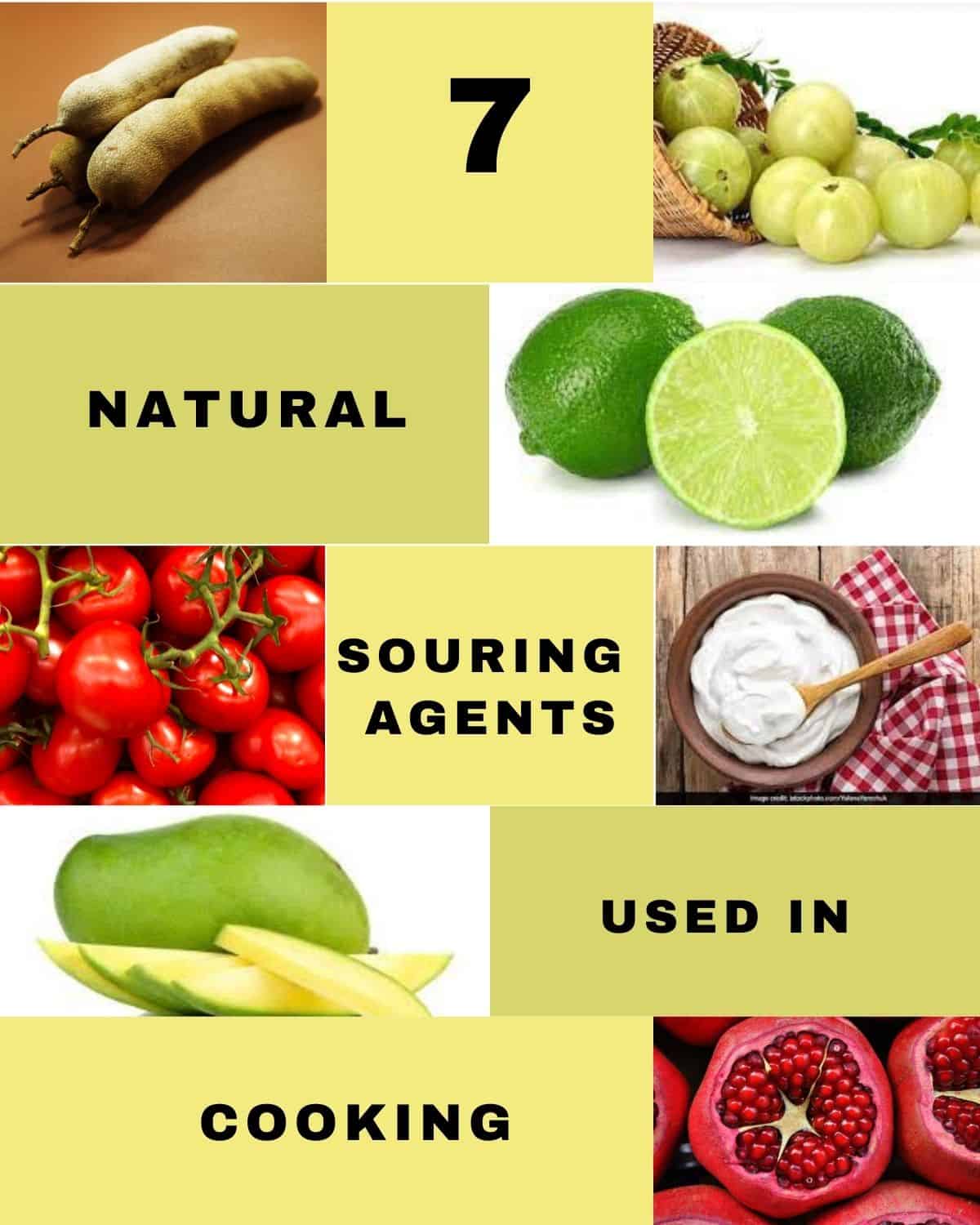
My cooking style is simple, tasty, and healthy (ish) - in that order. For me, taste does come before health.
The food that we consume should be healthy, no doubt. However, food that cannot pass the test of our tongue cannot go further in our system and do its magic, is what I believe.
Vinegar, a dilute solution of acetic acid, is an easy and handy way to add that instant sour hit to a salad or soup.
There are also natural ingredients that help bring that sour taste to a dish.
A splash of lime juice, a couple of tomatoes, or a spoonful of tamarind extract not only elevates the dish to another level but also adds its own, unique flavor to the dish.
Jump to:
What are the souring agents in Indian cuisine?
Here are the most commonly used ones:
- Limes / Lemons
- Tomatoes
- Tamarind
- Curd /Yogurt
- Amla (Indian Gooseberry)
- Pomegranate
- Raw Mango Powder (Amchur)
Lime / Lemons
Although many times both limes and lemons are used interchangeably, did you know that limes and lemons are quite different from each other in their tartness?
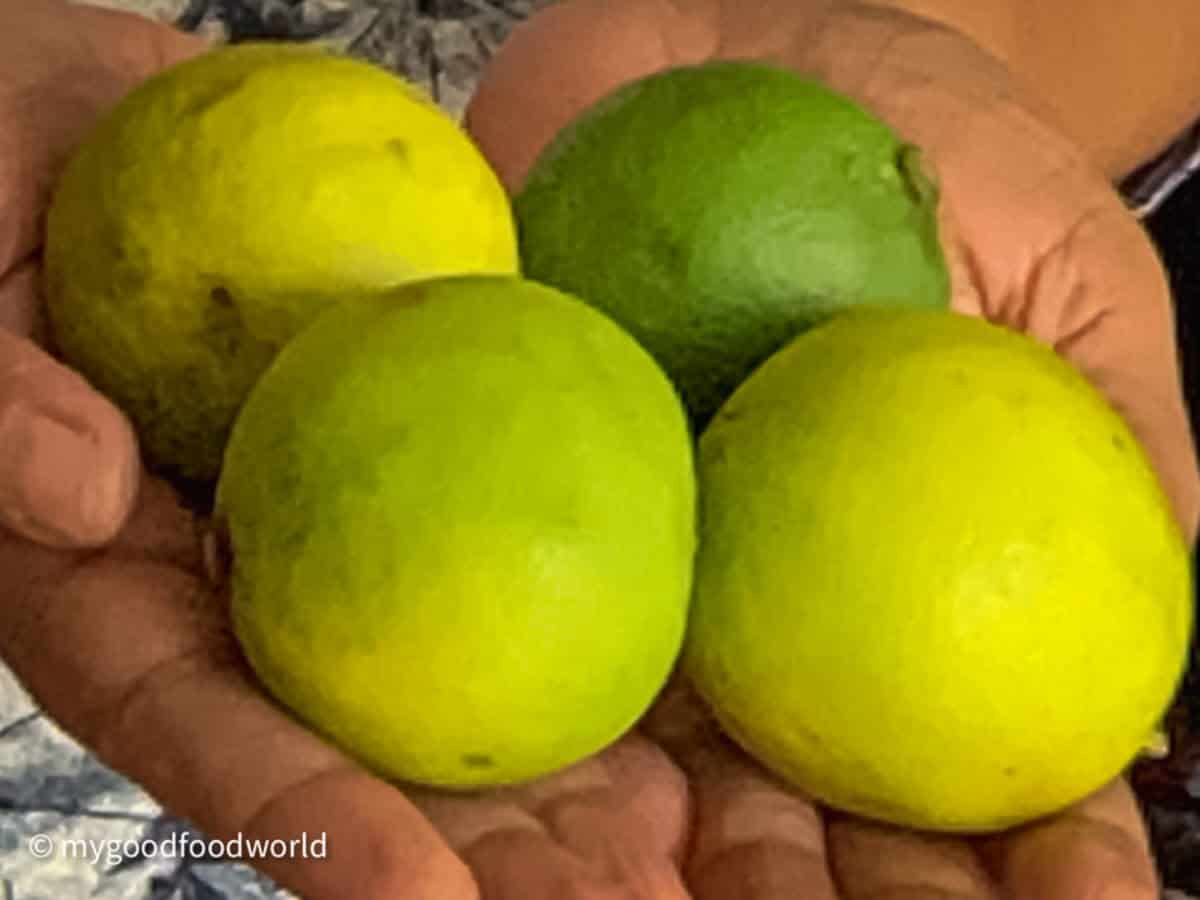
Difference between Limes and Lemons
Limes are more tart than lemons.
When I think of lime, I think of lime pickles! It is something I grew up on.
As a little girl, I remember helping my mum dry salted wedges of lime in the winter sun and when dried, mixing them with oil and spices to make an absolutely delicious and spicy lime pickle.
If you have eaten North Indian food at any restaurant or roadside eatery in India, you will almost always have been given a few lime wedges to squeeze over your dal, paneer tikka, or fish fry!
High on Vitamins C and A, I love to use lime juice to zing up my dal and chutneys.
So when do I use lemons? Mostly to make nimbu paani (the Indian version of lemonade).
I also use lemons as a substitute for limes.
If a recipe calls for the juice of a lime and I use lemon juice instead, I increase its quantity as lemon juice is less tangy than lime juice.
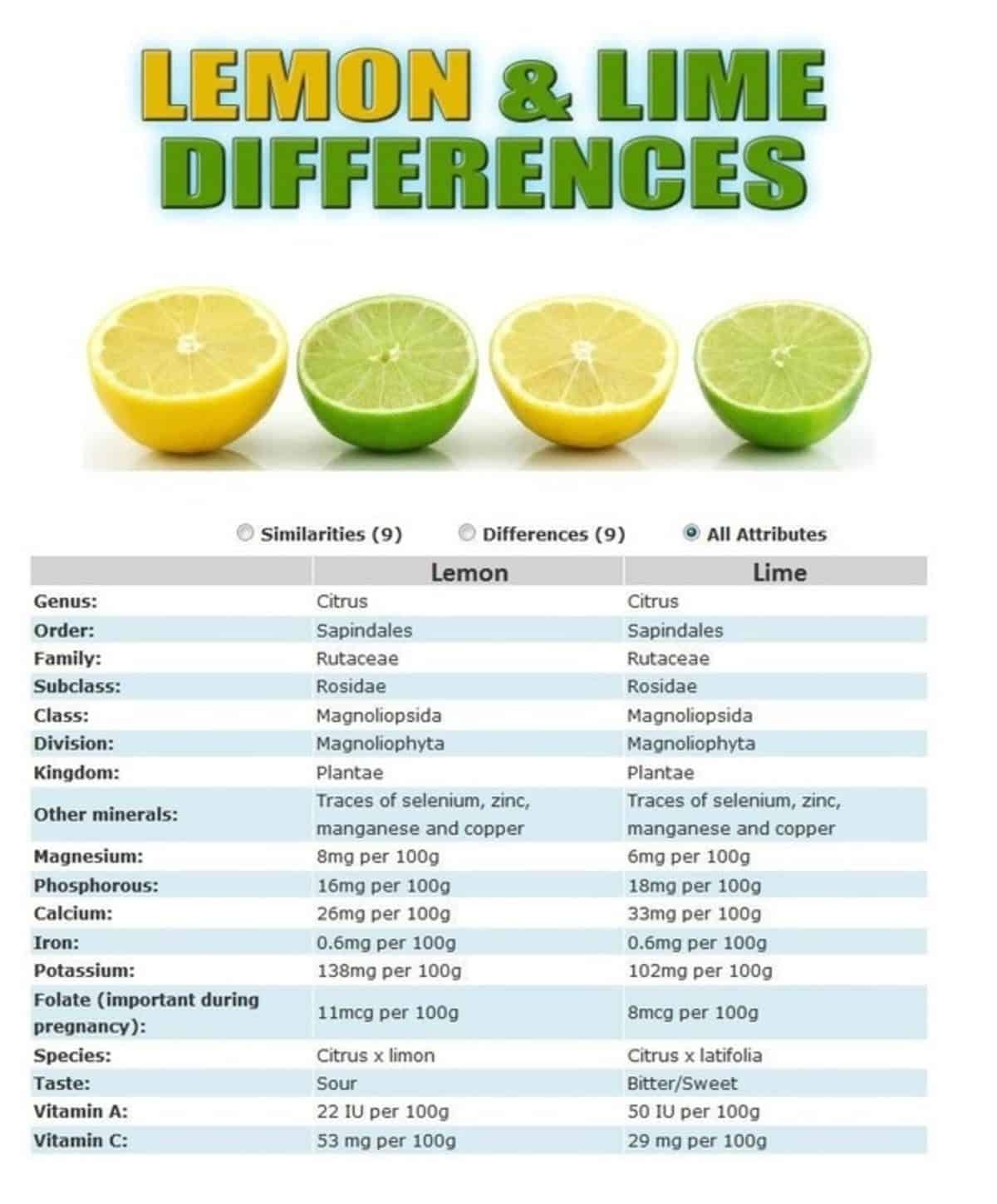
Buying and storing limes and lemons: I look for ones that are plump and feel heavy to the hand. This indicates that they will contain enough juice for the buck! I store them in the refrigerator for the best flavor and long life.
Cooking with limes/lemons: The best way to get maximum flavor from lemon or lime juice is by adding it at the end of the cooking process.
Take the dish off the heat and then add the juice as I do in this vegan potato soup and yellow lentil soup.
Lime juice is a good substitute for vinegar in pickling. These quick-picked carrots have no vinegar in them.
The acidity of limes helps in tenderizing the vegetables and brings together all the flavors like in this mung bean salad. In this raw carrot salad, for example, the tartness of the juice of lime not only balances the sweetness of the carrots and plum tomatoes but also helps in softening the raw carrots.
- Take the limes/lemons out from the fridge about 10 minutes before using them.
- Gently massage it with your palms for a few seconds and then cut them. This will make the fruit pliable and easy to squeeze.
What to use instead of lime/lemon?
Amla or Indian gooseberry (more about it later).
Amchur - dried raw mango powder.
Tomatoes
This one does not need an introduction! There is hardly a kitchen in the world that does not use tomatoes!
I love the ‘umami’ flavor of cooked tomatoes and is my favorite of all souring agents.
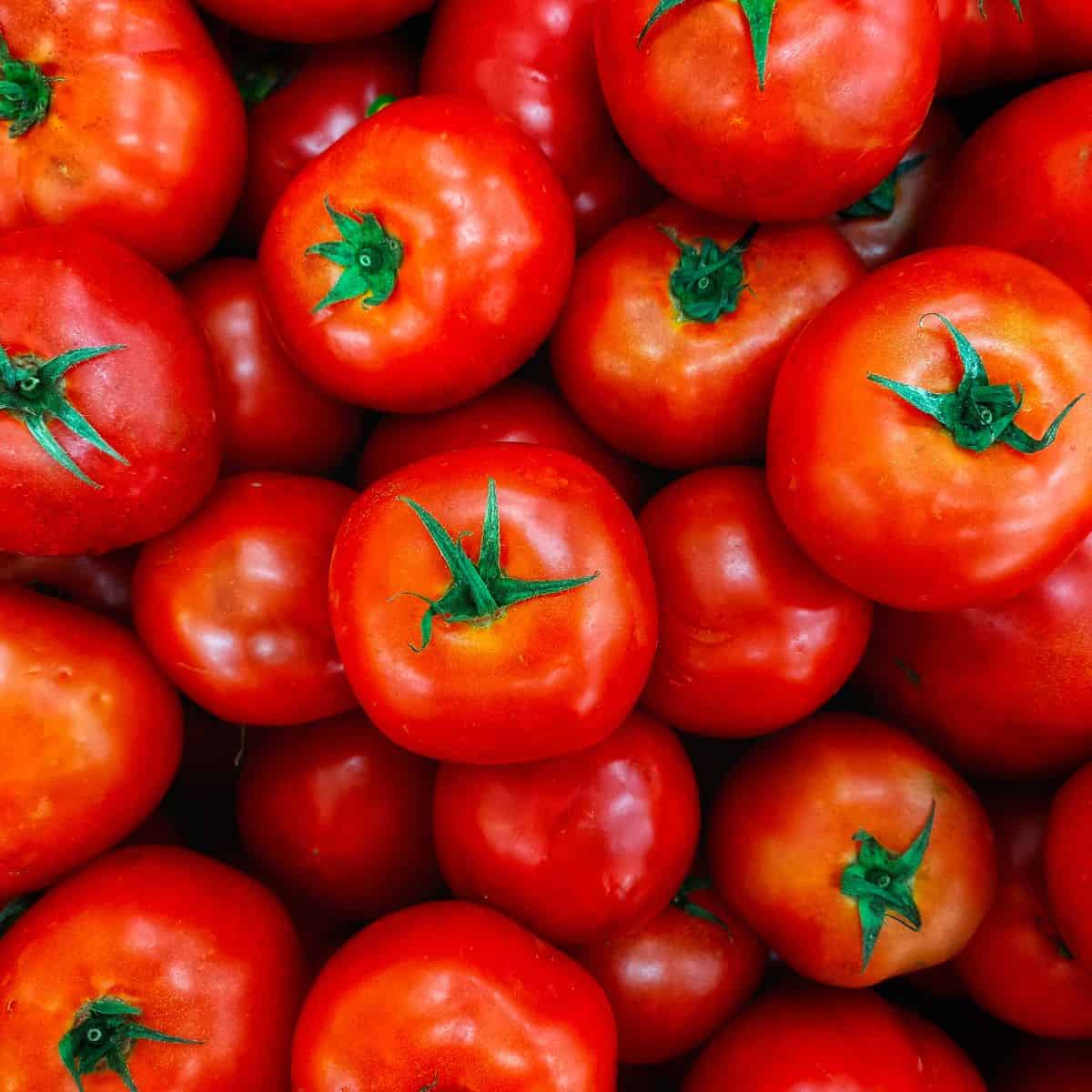
💡 Did you know that tomatoes are fruits and they belong to the nightshade family (as do eggplants, potatoes, and chilies)?
Buying and storing tomatoes: When buying tomatoes, I look for ones that are evenly red and still firm.
I buy tomatoes on the vine without removing the stalks. The vine keeps them nourished and fresh for a lot longer!
Refrigerating tomatoes reduces their flavor. Store them in an open basket at room temperature.
Using tomatoes in cooking: This being such a versatile ingredient, I love using it in all its avatars - raw, cooked, sundried, pureed, and baked!
In recipes such as palak paneer, aloo matar, bhindi masala, spinach dal, and green moong dal recipe, tomatoes provide a slight sour that balances well against the spices.
Tomatoes are of course the vehicle for all the flavor in this macaroni and tomatoes. Passata (tomato puree) and garlic make this hearty marinara sauce full of umami flavors which I add to pasta (of course!) and as a sauce for vegetarian zucchini boats.
Substitute for tomatoes: If you, like many others, do not eat tomatoes, then you could try using these instead:
sour plums have a similar texture to tomatoes when cooked.
grilled bell peppers (capsicum) - had read in an article sometime back (I do not remember where I read it, though!).
carrot puree with some lemon juice (I have not tried this). If you have tried this substitute please let me know what you think of it.
pomegranate seeds - in order to get a soft, squishy texture, cook the pomegranate seeds in little water till soft.
Tamarind
My childhood food memories are incomplete without the flavor of tamarind: be it the tangy-spicy pulihora (tamarind rice) or the sweet and sour tamarind chutney served with street foods such as chaat and pakoras, tamarind is in my blood 😆.
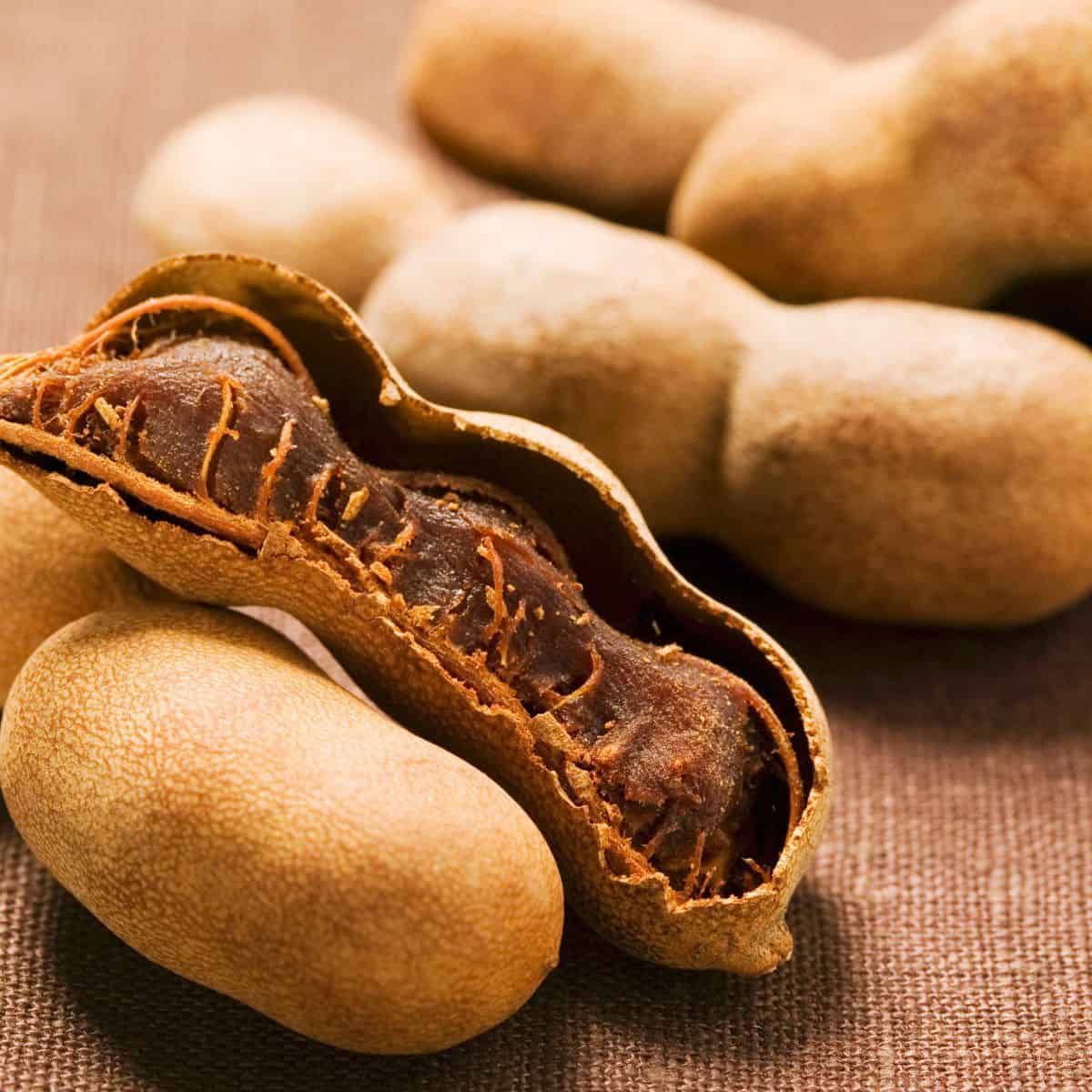
Tamarind is a seed pod, filled with seeds and with fibrous pulp around them, that grows on trees.
The word tamarind is derived from the Arabic word tamar hind which means "Indian Date".
The dark brown pulpy flesh of the fruit has a sweet-tangy, date-like taste.
Tamarind is a widely used souring agent in Indian cooking as well as in South East Asian and Latin American cuisines and is available in many forms.
Unripe fresh fruit: Is super sour! In my home state of Andhra Pradesh, the unripe fruit is used to make stock for curries, stews (this vegan stew, for example), and gravies.
The fruit is quite hard and tough to handle and is therefore boiled in water to make it soft and then the pulp is separated from the seeds and stringy parts.
Ripened fruit or pulp: I have seen tamarind pods in many Indian grocers. It, however, is more commonly sold in blocks - seeds and fiber removed. The tamarind sold in blocks is also referred to as pulp.
Paste or concentrate: These terms are used interchangeably. Tamarind paste or concentrate is the cooked down, thick and smooth version of tamarind fruit that is sold in jars/tubs.
Extract: Tamarind extract is made by soaking the ripened tamarind pulp (or whole deseeded fruit) in water (see video below).
Tamarind water: This is the diluted version of tamarind extract.
Or here is a quick recipe:
Soak 50g of deseeded tamarind in 200 ml of hot water for 10 minutes. Squeeze the fruit well with your fingers. You will get an extract that is thick and pulpy. Scoop the pulp and fibers out with your fingers or strain through a sieve. Store in a glass jar, in the fridge.
See my detailed recipe with pictures of making tamarind pulp at home.
Cooking with tamarind: I use tamarind extensively in my cooking. I always have a bottle of homemade tamarind pulp in my fridge! My onion chutney, mint coconut chutney, and dosakaya pachadi are incomplete without tamarind in it!
In this bitter melon recipe, tamarind and jaggery together balance the bitter melon.
Substitute for Tamarind: Here are a few ways to replace tamarind in your cooking:
Kokum is a fruit related to mangosteen and is native to India.
It is a popular ingredient in some regions of India not only for its culinary uses but for its medicinal properties as well.
The fruit is dried and the outer layer is used as a souring agent.
Mix equal quantities of lime juice with light brown sugar. It certainly will not give the same fruity tanginess that tamarind can bring to a dish, but it will do!
Curd / Yogurt
Curd is ubiquitous in Indian cuisine.
In most parts of India, it is a mandatory part of a meal because the good bacteria in it aid digestion.

A significant source of calcium, one of the many benefits of curd is that it boosts the immune system.
Depending on the dish, I use fresh curd (i.e. as soon as it sets) or allow it to ferment until it reaches the desired level of tartness.
In most Indian homes, setting curd is a daily activity and is most commonly made with full-fat cow or buffalo milk.
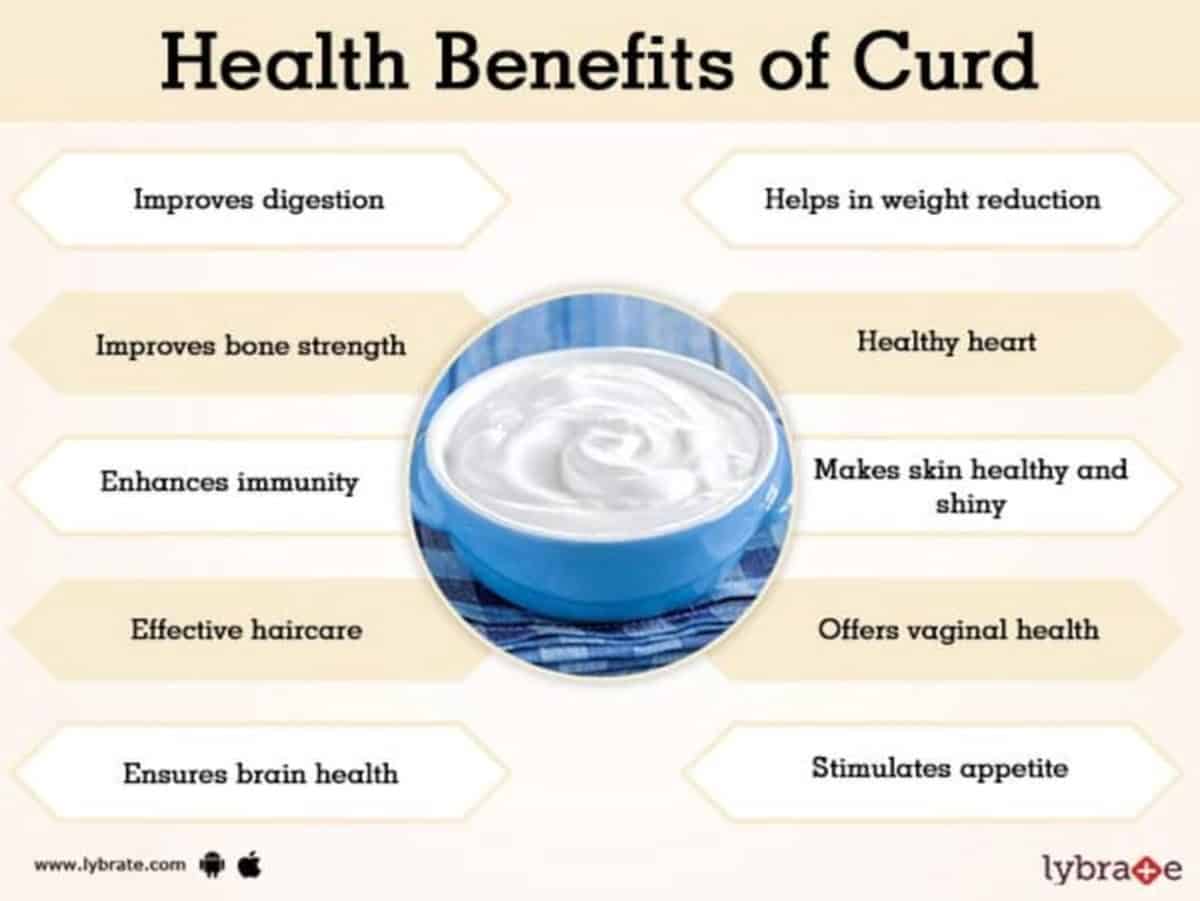
Setting curd at home
- Bring 4 cups (1 liter) of milk to boil.
- Pour it into the container in which you want to set the curd. Set aside to cool. It is essential to get the milk to cool down to the right temperature - for the bacteria to thrive and multiply! The best way to check this is to dip your little finger in the milk. If you can hold your finger there for about 30 seconds, that is the right temperature! If you prefer to use a thermometer instead, it should register 108 -113 F (43-45 C).
- Add about 2 tablespoons of starter yogurt - plain, unflavoured yogurt - that you have saved from your previous batch or bought from a shop, stir and cover the container. Place this container in a warm spot. During the summer months, when the temperature outside is 75 F (25 C) or warmer, the kitchen countertop is good enough for the curd to set. However, when the temperature outside is cooler than that, a boiler room or an oven with a pilot light on is ideal. Let it sit for 7-8 hours (or overnight).
- To check if the curd is set, open the lid and shake the container gently to see if the curd is firm. If yes, then put it in the fridge. If not, put it back in that same warm spot for a few more hours till it sets firm.
Cooking with curd can be tricky. Over the years, I have learned some tricks that work!
For instance, when making gravies and sauces, I whisk it well and almost always add a binding ingredient such as rice flour or chickpea flour to it, turn the heat to its lowest, and then add the curd to the dish.
Rather than rapid boil, I will let the curd come to boil on a gentle heat and then let it simmer. This prevents the curd from curdling!
Raita is a savior on days when I have very little time on hand and need something that is delicious and nutritious on the dinner table. Raita, as you may know, is made with curd (or yogurt) and has at least one vegetable in it.
This cucumber raita comes together in five minutes and is a regular feature in our household. This beetroot raita and tomato raitha are perfect for scooping up with a piece of bread (such as these vegan tortillas).
Substitute for curd:
- sour cream.
- vegan yogurt
Vegan yogurts may not have the same level of tartness as cow (or buffalo) milk yogurt. I suggest adding a dash of lime (or lemon) juice to your vegan yogurt to make it tart.
An Ayurvedic substitute for curd/yogurt is to grind some overnight soaked and peeled almonds with ¼ measure (in proportion to the number of almonds used) of chopped Indian gooseberry (amla) to a smooth paste. Use this paste in place of curd.
You may have noticed that I am using the words curd and yogurt interchangeably. I am aware that yogurt is not the same thing as curd, however, since many of us do not make curd at home, yogurt is a good substitute for curd.
Amla (Indian gooseberry)
Pronounced "am. luh", amla literally means “sour” (in Sanskrit).
Ayurveda holds this ingredient in high regard and gives it the status of a superfood.
Amla has many health benefits - it is high in vitamin C, boosts the immune system, helps absorb iron from the gut, and has anti-inflammatory properties.

As a child, when I would feel under the weather, my grandfather, an Ayurvedic practitioner, would ask me to eat some hot, soft-cooked rice with ghee and chutney made of amla.
These days amla is available in the form of juice, tonic, candies, dried, powdered, and even as capsules! I, however, prefer to use fresh fruit.
Buying and storing amla: When buying fresh, look for plump, glossy ones that are evenly light green.
Ideally, they should not have any black/dark brown spots on them. However, since it is nearly impossible to get ones without spots (unless you get them plucked from the tree and consume them within 36 hours of being plucked!) I look for the ones with the least number of spots on them.
You will find fresh or frozen gooseberries in most Indian grocers.
Store amla in the refrigerator and they will stay fresh for about 3- 4 days.
If you have bought a large quantity, I suggest that you freeze them - discard the stone and cut them into pieces.
Cooking with Amla: With Amla, a little goes a long way! In this cilantro mint chutney, the intense sour of amla brings piquancy to the otherwise bland cilantro and mint.
Substitute for amla: here are a few other ingredients that you can use in its place:
- Regular gooseberries - the ones that are bright green in color with a veined effect.
- Lime or lemon
- Amchur (dried mango powder)
- Dried pomegranate seeds are also known as anardana powder
- Green (cooking) apples such as Bramley or Granny Smith
Unripe (green) mango
Mangoes are a delicious and versatile fruit that can add a burst of tropical flavor to any dish.
In India, the mango is much loved and revered as the king of fruits!
Consumed equally in its unripe and ripe forms, mango is rich in Vitamins A and C, and Magnesium, mangoes are said to prevent dehydration.
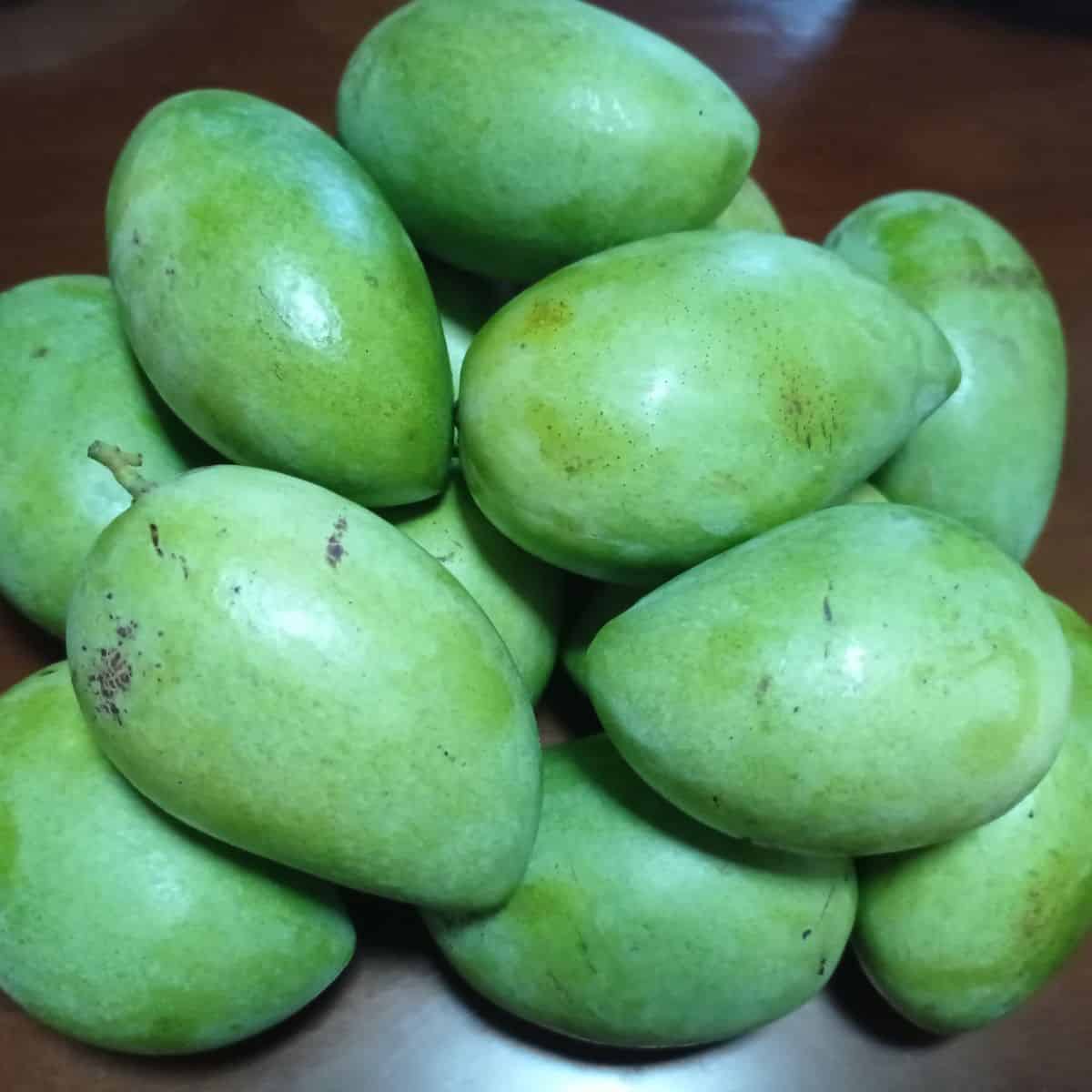
Aamras, a refreshing drink made with green mangoes, is an extremely popular drink in the Northern parts of India during the summer months when the sun is scorching and the temperature can reach up to 120 F (50 C) in some parts! ☀️
Cooking with mangoes: The flavor of unripe mango reminds me of summer and they range from being mildly tangy to tongue-tingling sour!
To prepare mangoes for cooking, start by peeling the skin with a sharp knife or vegetable peeler. Then, cut the fleshy part of the fruit into small, bite-sized cubes, discarding the tough, fibrous seed at the center.
Have you ever tried having raw mango wedges dipped in a mixture of salt and red chili powder? Yum!! 😋
Preserving mangoes: Since unripe mangoes are seasonal, in order to enjoy their goodness throughout the year, I preserve them in different forms.
Pickling is the most common way to preserve unripe mango.
Freezing: Peel and cut them into cubes and freeze them in freezer-safe bags.
Another popular way to preserve them is to make Amchur. The literal translation of “amchur” is mango powder.
Unripe mangoes are peeled, sliced, and dried in the sun. These sun-dried slices are ground to a fine powder.
Amchur should be stored in glass/ceramic jars and stays good for months.
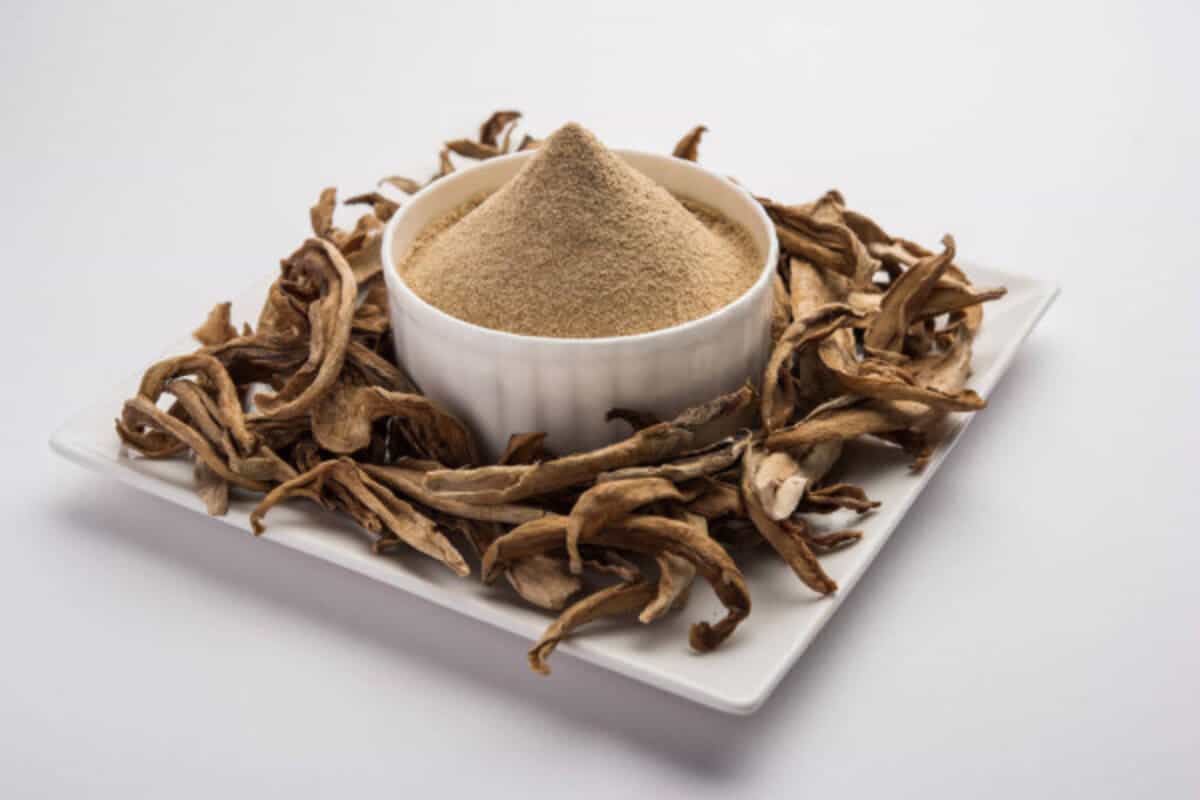
Substitute for raw mango:
- Lime juice
- Amla
- Green apple
Pomegranate Seeds
The pomegranate is truly a gem of a fruit! It's ruby red seeds and sweet-tart juice add such a sparkle to dishes!
Thought to have originated in Persia, pomegranates feature in many Indian dishes, where the fruit adds a distinctive flavor to gravies, chutneys, and even drinks.

According to Ayurveda, pomegranates are among the healthiest fruits of all! They have anti-inflammatory properties and contain a range of nutrients that are unrivaled by other fruits.
The jewel-like seeds, known as arils, are high in fiber, Vitamins C and K, folate, and potassium.
Buying pomegranates: The best pomegranates are available during the months of July through December.
When I buy pomegranates, I look for ones that feel tight and heavy - indicating to me that they are fresh and full of juicy seeds.
The leathery skin should be shiny and without any cracks or spots on them.
Releasing the seeds of a pomegranate: Getting the seeds out of the tough skin can be quite tricky. To be able to release the seeds without having the deep red juicy squirt out on your clothes and kitchen counter is nothing short of a skill!
Score the pomegranate, around its perimeter, with a sharp knife. With your hands, pry open the fruit in half. Flip it over, seeds side down, and bash it with the back of a spoon or a small chopping board to release the seeds. Discard the white membrane and pith.
Storing pomegranate seeds: Although the fruit itself can stay unspoiled for weeks, once the seeds have been separated from the fruit, they will last only a few days in the refrigerator. You can, however, pack them tightly and freeze them for up to three months.
A common way of preserving the seeds is to sun dry them and grind them to a fine powder (anardana powder). This not only intensifies the flavor but also preserves them for months without having to freeze them.
Substitute for pomegranate seeds
- Dried cranberries
- Dried cherries
- Red Currants
Frequently Asked Questions
Lime or lemons are a good substitute for white vinegar. Amla juice is also a good replacement.
Amchur (dried mango powder) and anardana powder (dried pomegranate seeds powder) are flavorful substitutes for vinegar in fried rice. You can also use lime or lemons.
Lime or lemon juice is a perfect and natural substitute for vinegar in pickling.
Yes, tomato is a commonly used souring agent. Tomatoes add tartness to a dish as well as umami flavor.
There are many souring agents used in cooking. Some of the common natural ones are limes, tamarind, tomatoes, curd, pomegranate, unripe mangoes, and amla.
Have you found this detailed article about natural souring agents helpful? Please take a moment to leave a comment and a rating below. This will make me super happy and motivate me to create more good content for you! You can also engage with me on Twitter, Facebook, and Instagram xx Padma
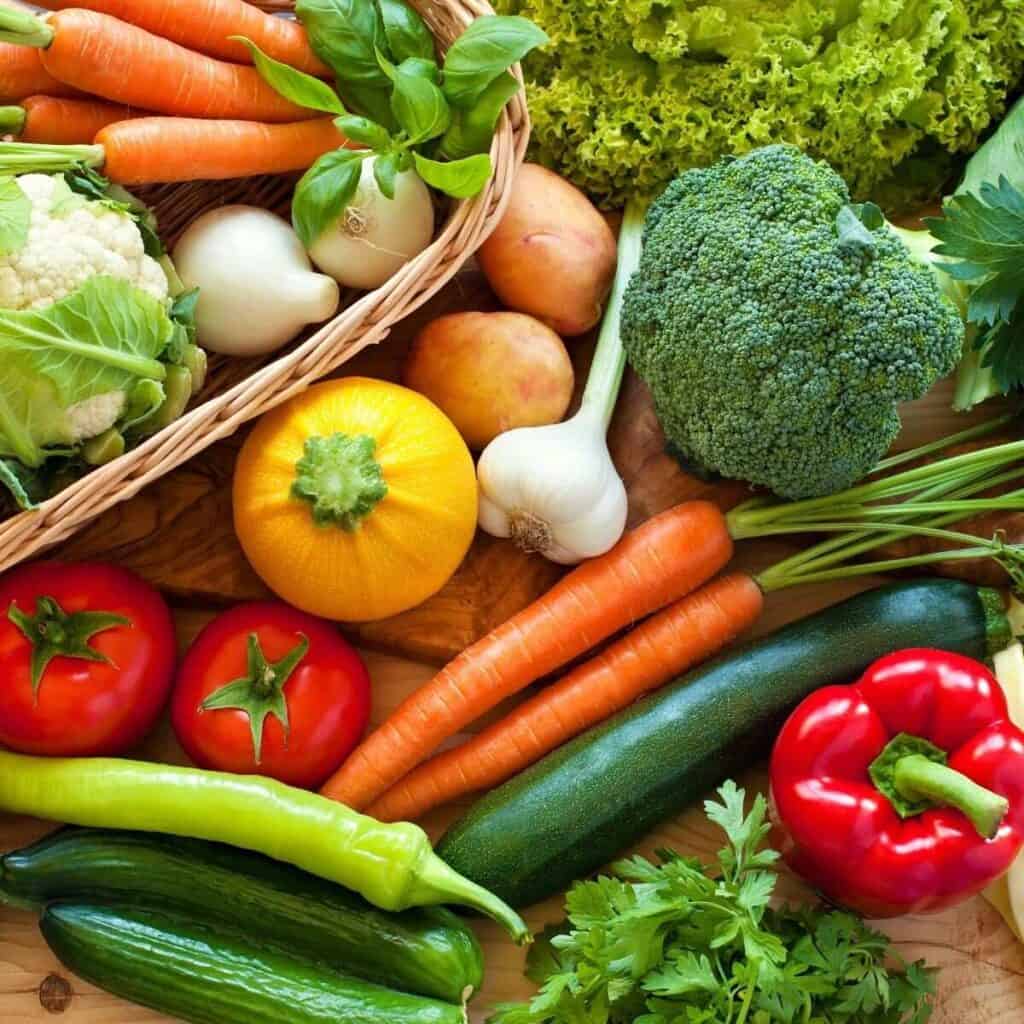
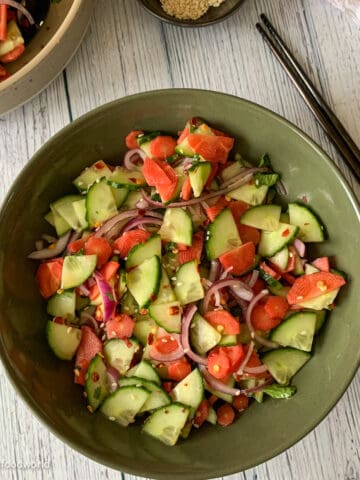
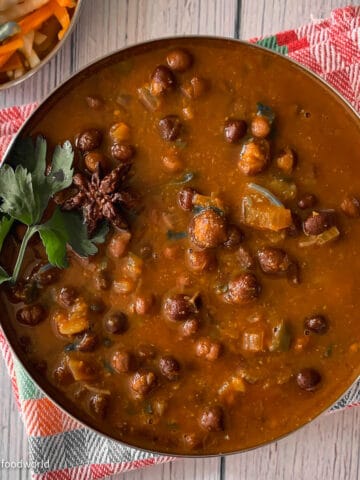
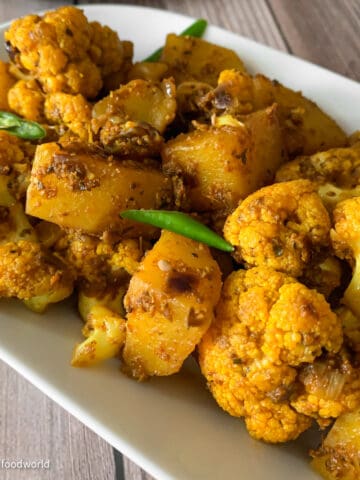

Indu says
Cannot imagine my kitchen without limes. I do prefer them over lemons.
Padma Kumar says
Me too Indu. Love limes and do keep some lemons handy as well.
Dave says
Interesting read! Pomegranate seeds as a souring ingredient is a first for me.
Padma Kumar says
Thank you Dave! Pomegranate is indeed an interesting souring agent. It add a lovely fruit flavor to the dish.